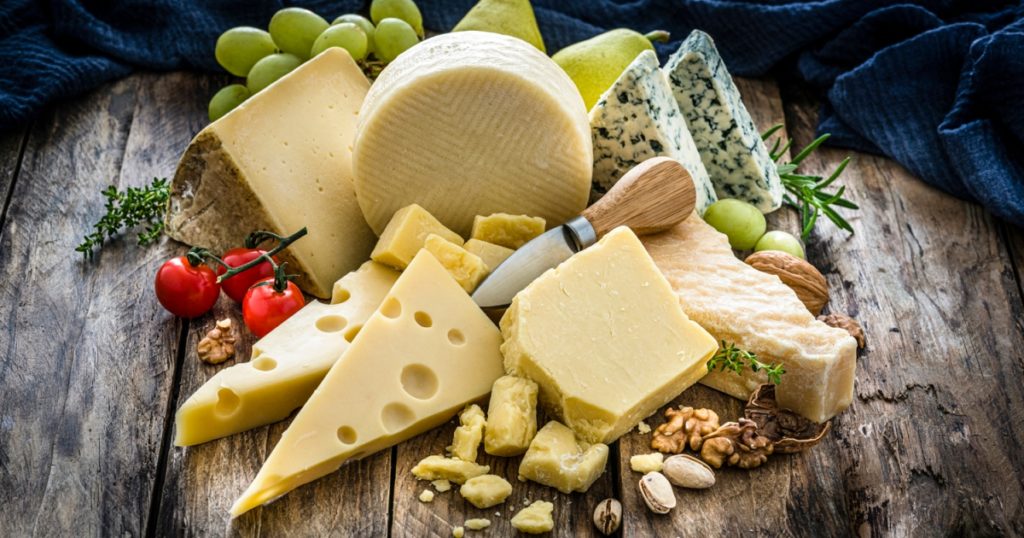Why Cheese Is Healthier Than You Might Think
Joseph LaFave Feb 13 2023

Strong or mild, full-bodied or mellow, white or yellow. Cheese is an iconic food that can be found in almost every culture across the globe.
It’s undeniably tasty and goes well with almost everything, but for years, cheese was thought to be the mortal enemy of cardiologists the world over.
But is it? Research conducted over the last few years has found cheese to be much healthier than originally thought.
What Is Cheese, Exactly?
Broken down to its molecules, cheese is a coagulation of proteins and fats which, thanks to special bacteria, come together and are processed into the finished product.
It’s the fats, specifically the saturated fats, in cheese that for years gave the dairy product a bad name in many doctors’ offices around the world.
However, not all fats are created equal, and some of the fats found in popular cheese varieties like cheddar, Swiss, and mozzarella are ones that the human body needs to remain healthy.
Cheese in general, “is high in polyunsaturated fatty acids, which are essential fatty acids,” Dr. Mark Johnson, assistant director of the Center for Dairy Research, said in an interview with The Epoch Times. “They do have some of the other fats but they’re high in the good fats.”
How Are Different Cheeses Made?
Although most cheese varieties look similar in their infancy, it’s the addition of specific bacteria to the young cheeses that transform them into the unique varieties with which we’re familiar.
“The flavor you’re getting is from molds or yeast or bacteria, and we can add those specific types to make specific flavors,” Johnson said.
The type of milk used also matters. Common types of milk used are cow, goat, sheep, and buffalo. Each type of milk will give the cheese a different profile.
And just as the taste of these cheeses differs, so do their molecular makeup and their nutrient count.
Healthiest Cheeses
Which cheese is “healthiest” will depend on an individual’s definition of healthy and what their health and wellness goals are.
- Cheese with fewer calories and less salt
For people who are looking for cheese with fewer calories and less salt, consider softer white cheeses like mozzarella or cottage cheese, which boast a calorie count of around 85 per 1-ounce serving. These options are also lower in sodium, which can be important for those with high blood pressure.
Goat cheese can be low in calories, but watch out as some goat cheese will have added flavors that come with added calories.
Feta cheese has a similar profile and calorie count, but this cheese, which can be made from goat’s or sheep’s milk, is usually high in sodium thanks to its brine.
- Cheese with dense nutrients
But what about those who are trying to gain weight, like those with chronic illnesses or the elderly?
According to Johnson, cheese is a great way for these people to get the nutrients they need.
“Ten pounds of milk makes one pound of cheese. I doubt anyone is going to drink 10 pounds of milk in a day, but someone could eat half a pound of cheese in a day,” he said. “Some cheeses, like Swiss cheese, have a high amount of vitamin B12—it’s produced by the bacteria in the cheese.”
Cheeses that are nutrient or calorie dense include ricotta and blue cheese.
Ricotta cheese contains whey, a byproduct of the cheese-making process that’s famous for being high in protein. Blue cheese is packed with calcium, a key ingredient in bone health.
“Cheese is high in calcium and phosphate, in the right ratio so your body can use it to produce more bone mass,” Johnson said. “Dairy products, not just cheese, contain all the essential amino acids you need, much more so than from plant sources.”
Don’t Forget Those Microorganisms!
The same bacteria that change the raw cheese into the finished product also spawn microorganisms that can have surprising health benefits and protective qualities.
According to a 2022 study, the lactic acid bacteria found in cheese can protect it from harmful bacteria like Listeria and Staphylococcus, among others. In ancient times, these bacteria were cherished among farmers and cheesemakers not only for their ability to grow magnificent cheese, but also for their ability to preserve it.
Today, says Johnson, the bacteria needed to “start” a cheese are cultivated by specialists and sold commercially. These starter cultures can contain both the needed bacteria to form a specific flavor or smell and simultaneously make the cheese safer for human consumption.
Another smaller-scope study found that eating cheese can improve the health of our gut microbiome, and can help us digest and remove potentially harmful organic compounds like trimethylamine N-oxide (TMAO).
TMAO is made by the body as a result of eating certain animal products, specifically red meat. Those with higher levels of cheese in their diet were found to have less TMAO. High TMAO levels have been correlated with higher mortality rates.
Who Should Avoid Cheese?
More than one out of every three Americans has difficulty digesting a lot of dairy products. Experts believe this is due to a problem the body has with absorbing the sugars found in milk, called lactose. Those who cannot process lactose are often diagnosed with a condition called lactose malabsorption.
At first glance, it would be easy to assume that those with lactose malabsorption would have to swear off cheese for life. However, thanks to the unique way some cheeses are made and aged, there are varieties of cheeses that are safer for lactose malabsorption patients.
Johnson recommended aged cheeses such as cheddar and parmesan as potential options.
“Do your research; some cheeses may be acceptable because of low lactose levels,” he said.

